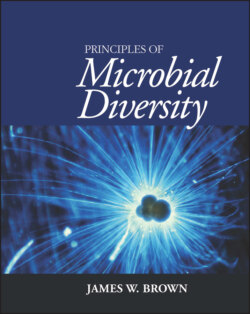Читать книгу Principles of Microbial Diversity - James W. Brown - Страница 38
The false eukaryote-prokaryote dichotomy
ОглавлениеThe classic major division of living things is between eukaryotes and prokaryotes. Most textbooks have a table (Table 2.1) indicating how different these kinds of living things are.
The problem with the prokaryote-eukaryote dichotomy is that it is exclusionary; it is a lot like the vertebrate-invertebrate dichotomy of animals. The terms “prokaryote” and “invertebrate” describe what an organism is not, but they do not describe what it is. “Prokaryote” simply means “not a eukaryote”! Therefore, the term “prokaryote” as a label for a group of organisms is scientifically invalid. The notions of “prokaryotes” arose over the years for no real reason other than default; it became an assumption that all noneukaryotes were of a single kind, because the existing tools could not distinguish different “kinds” among them, but as we see, this is not the case, any more than it is the case that all “invertebrates” are of a kind. There are in fact two fundamentally different kinds of “prokaryotes,” Bacteria and Archaea, which are at least as different from each other as either is from eukaryotes. Banish the term “prokaryote” from your vocabulary, along with “evolutionary ladder” and “higher eukaryote,” except to use (in quotation marks) in reference to a quaint, outdated anachronism. File it in your mind alongside the term “phlogiston.”
Table 2.1 Sample “eukaryotes versus prokaryotes” table common to biology and even microbiology textbooks
| Eukaryotes | “Prokaryotes” |
| Large (20–100 μm) | Small (1–5 μm) |
| Contain nucleus | No nucleus |
| Contain many large linear chromosomes | Contain one small circular DNA chromosome |
| Contain organelles | No organelles |
| Diploid | Haploid |
| Cell cycle includes mitosis | No mitosis |
| Reproduce sexually or by budding | Reproduce by binary fission |
| Cells contain a cytoskeleton | No internal skeleton |
| Ingestive or photosynthetic | Absorptive |
| Multicellular | Unicellular |
| Complex life cycles and cellular differentiation | Simple division cycle, no differentiation |
| mRNAs are polyadenylated | No polyadenylation |
| Genes transcribed separately | Genes transcribed together in operons |
| Genes contain introns | No introns |
| DNA packaged with histones | DNA not packaged |
In addition, many of the stark contrasts between bacteria (“prokaryotes” in the case of this table) and eukaryotes come from falsely assuming that plants and animals are typical eukaryotes and that E. coli and Bacillus subtilis are typical prokaryotes, and from an active striving to identify differences, no matter how trivial, in order to make eukaryotes “higher” and prokaryotes “lower.” But something that is true for E. coli and B. subtilis is not necessarily true for other bacteria, and something that is true for plants and animals is not necessarily true for other eukaryotes. Bacteria are not primitive—they are modern organisms, the result of over 3.6 billion years of evolution, just like eukaryotes. As a matter of fact, Eukarya, Bacteria, and Archaea are not at all as different as these tables suggest. All of the apparent differences listed above are bogus in one way or another: at best overgeneralizations and at worse simply false.
